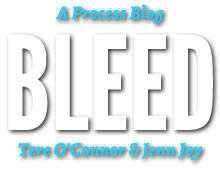Sept 3, 2012 When I was a boy, I spent an entire day building a fort with my friends. It was an excellent fort that excited my imagination. I thought of inviting my brothers there or of making sculptures with sticks to decorate it or of retreating there to hide after launching mildly vandalistic boy attacks on the neighbors’ houses. It excited me so much that I couldn’t sleep from the thought of re-inhabiting it the next day. Yet upon my arrival in the morning, I was overcome with a feeling of great disappointment. The actual fort, that had ignited the fort reverie, was unable to match said reverie.
Something similar to this is repeated daily for me in the process of making a dance. What I make on a given day might be created solely to point my mind in a certain direction, with no further need for it as material. The material excites me and I remember it that evening with great satisfaction, drugged into thinking it is valuable. But it is transitional.
As is perhaps clear in earlier posts, I was very excited by what was going on, but when I returned after 4 days away, I felt like there was nothing there. No matter how long I have been working, something in me still looks for permanence in the shaping of material, but each time it is executed afresh, the performers are in different places and it is no longer the same. The dancers were engaging with the same excellence as last week, yet I had time to expand the work in my imagination and unfortunately, that rendered the actual material a listless flow of blunt, inarticulate magma. Does that sound negative?
It’s not. It is an inherent drama of this form, where the division between the imagined and the actual give shape to a work. The repetition of this process at the beginning of each dance launches a critical mind that leads me closer to seeing and valuing what is emerging, rather than placing too much importance on the material that marks that journey. This initial roller coaster ride generates the specific relationship in each dance between the visual information of a work and its temporal detachment. The physical material cannot offer signification because it is controlled by the intentions of time moving forward and erased by every next moment. The material is a container where shifting ideas, internal lives, viewer expectations and projections converge. It is hard to manage.

ahh, so this is partly why the work I made “last year,” and rocked my world, seems trite and meaningless when I see it and remember it with a little help of video “today.” I wondered why it seemed so often to have grown stale.